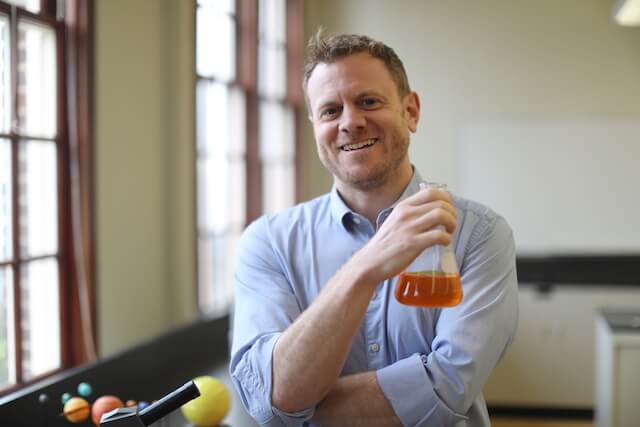
We congratulate Dr. Patrick Marti, Villa Middle School Science and Math teacher, who was recently featured in an extensive interview on Thrive+Global—a web platform with 2,000,000 unique visitors a month—and on their companion site, Authority Magazine.
The article, 5 Things You Need To Know To Be A Highly Effective Teacher, encompasses several education topics, and you can read it in its entirety here.
Please note that due to a site formatting error in the "Highly Effective Teacher" section, we're including Patrick's insights in an abridged excerpt below:
1. Foster Relationships — It goes without saying that strong relationships cultivate a learning environment that is safe, supportive, and productive. While this obviously applies to the student-teacher relationship, it also relates to each student’s relationships with their peers and to the subject. One of my favorite pieces of feedback I’ve ever received came from one of my 6th Grade classes in my first year of classroom teaching. They said that I “…treated them at the appropriate age by not expecting them to do more than 12 year-olds should but also not treating them like little kids.” I couldn’t have met their needs so precisely had I not taken the time to get to know them as individuals and as a class.
2. Embrace the Wildness — When I think about the moments in my classroom where student learning has really come alive, students are having fun and using their creativity in a situation where they are not afraid to fail. I call this the ‘wildness’ of education. It harnesses the best aspects of childhood — playfulness and imagination — and allows students to let their creativity drive their learning in a safe environment. For example, students in our Earth & Space Science class are given the task of designing a building from a limited set of classroom materials that will be able to withstand a simulated earthquake. The buzz that is generated on testing day is palpable, as students make last-minute modifications to their designs. By creating an environment where it’s ok for their building to fail, students are able to have fun and utilize their creativity to apply the knowledge we’ve learned in the class to a real-world problem.
3. Develop Real-World Connections — It’s vital that students are provided with opportunities to connect their learning to the world that exists outside of the classroom. In science, we challenge students to apply their knowledge to tackle real-world problems from around the globe. For instance, as part of their study of astronomy students participate in an engineering challenge focused on landing a rover on Mars. Students investigate the logistics of planetary exploration, draft a blueprint, and then make and test a prototype of a rocket or rover landing system. This work is complemented by a presentation from an engineer based at the NASA Jet Propulsion Laboratory that works on the Perseverance Mars Rover, deepening student connection and allowing students to discuss their work with a professional.
4. Prioritize Student Curiosity and Choice — Learning is so much more rewarding when students are invested in it. By
allowing student curiosity to drive the curriculum and providing students with choice about how they access new material and demonstrate
their understanding of important concepts, students are empowered to take control of their own educational experience. One of my favorite
examples of student-driven work takes place during our study of ecology, when students participate in an Earth Day-themed Innovation Fair.
Working in groups, students take ownership of their learning and decide on an environmental issue that is important to them and are free to
employ their creativity to address it through any medium they please.
5. Be Yourself — I once heard a teacher say, “Anyone can teach a class, but no one can teach it the way that you can.” I couldn’t agree more. Every teacher’s journey informs who they are in the classroom, and I am intentional about incorporating my own personality and experience into each and every class. As a new teacher, I started rewriting the lyrics of songs to explain scientific concepts, reinforce classroom expectations, and provide motivation to students. Before long we had a whole catalog of songs, raps, and dances. What started as an expression of my own silliness led to enhanced student engagement, and none of that would have happened had I been unwilling to be myself with my students.

Villa Academy is a private, Catholic, preK - 8th grade school located in the Laurelhurst neighborhood of Seattle, Washington.
We offer a rigorous curriculum for children ages 3 to 14 from around the greater Seattle area.